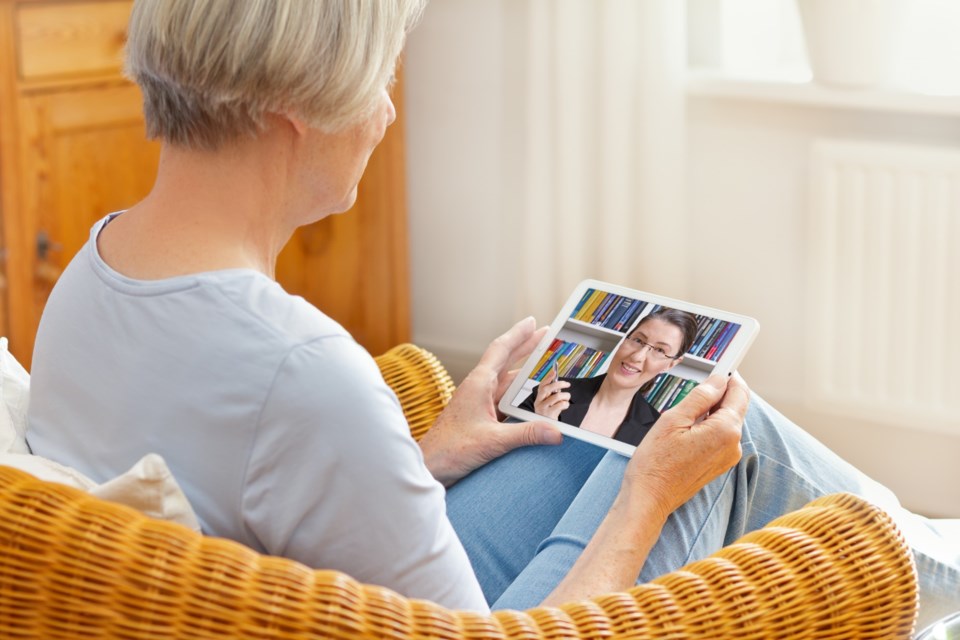This article, written by Stéphane Vial, Université du Québec à Montréal (UQAM), originally appeared on The Conversation and has been republished here with permission
Over the past few weeks, there has been a considerable and unprecedented increase in awareness of the importance of mental health. In fact, no mental health awareness campaign has ever had as much impact as the one sparked by the COVID-19 crisis.
Nearly four billion people are confined to their homes, voluntarily or compulsorily, and are more prone to stress, anxiety, fear, sadness, frustration, irritability and anger. Government leaders talk about mental health almost every day at their news briefings.
“It’s normal to feel anxious or stressed,” Prime Minister Justin Trudeau said at one briefing, before thanking mental health professionals who provide services at a distance.
Two days earlier, Manitoba Premier Brian Pallister said he had experienced several episodes of depression in his lifetime.
The social relevance of digital technologies in mental health has never seemed so great, whereas just a few weeks ago, e-mental health was a subject reserved for experts and technophiles.
Today, there is widespread mobilization to accelerate innovation and research in this field. This is evident by announcements from the Government of Manitoba, the federal government and the American Psychological Association. It’s unexpected, but it’s good news, because telepsychotherapy, for example, is lagging behind telemedicine.
A young but promising field
E-mental health is an area of research and intervention that emerged in the early 2000s. Telepsychotherapy is the best known form, but this field is vast and also includes access to medical information, co-ordination of care pathways, prevention and follow-up applications, self-care or mutual aid online. In short, everything that can be done with digital technologies to provide mental health care and information can be linked to e-mental health.
This does not mean replacing psychiatrists and psychologists with artificial intelligence systems, or abandoning face-to-face meetings for virtual consultations. Rather, the challenge is to harness the potential of digital technologies to improve access to care or effectiveness of treatment, particularly where conventional approaches are poorly accessible, failing, saturated or absent.
As noted by the Mental Health Commission of Canada, e-mental health services are a complementary solution to traditional care. For example, there are science-based digital services to detect and manage stress (iSmart), overcome insomnia (Sleepio), support the self-management of mood disorders (Aller mieux à ma façon), or mitigate the impact of auditory hallucinations in schizophrenia through virtual reality (Centre Axel).
These types of digital mental health services offer novel non-pharmacological approaches, provided they are based — like those mentioned above — on proven research protocols.
Issues of credibility and trust
There are thousands of mental health mobile phone applications but very few have been scientifically validated. The supply is confusing and varied and the effectiveness of these applications is often difficult to evaluate. Added to this are concerns about privacy and security, lack of availability or lack of information disseminated to the public.
The capacity of new technologies to have a large-scale impact is very real, but it has not yet taken off. Very few e-mental health services meet the following four quality criteria: scientific validation, user experience, data privacy and security, and economic viability of the service.
For example, the mobile applications offered by mental health start-ups are often very user-experience oriented but have little scientific and ethical validation. Conversely, applications developed by clinical researchers are highly clinically and ethically relevant, but neglect user experience and commercialization.
The teleconsultation issue
The glaring lack of telemental health solutions specifically adapted to the practice of psychiatric care means the available telemedicine services will have to meet most of the demand, especially in the context of the COVID-19 crisis.
Psychologists or psychotherapists who wish to offer their services remotely have little choice but to use these generic telemedicine or videoconferencing services. In the absence of alternatives adapted to mental health, professional associations in the sector such as the American Psychological Association in the United States or the Ordre des psychologues du Québec must rely on these. But telepsychotherapy is not telemedicine, and solutions specific to mental health are needed.
In a face-to-face consultation, in fact, psychologists’ offices do not resemble medical spaces at all. As my colleague Francis Levasseur has clearly shown, psychologists’ offices are “relationship spaces” that obey a particular style in the arrangement of furniture and objects.
This arrangement of space or design of place is fully part of the framework offered by psychologists and psychotherapists. What happens to it on a screen? How do you transpose the spirit of the practice into a digital interface? In terms of e-mental health, this is a major issue, which should not be trampled over in the urgency of the situation.
Psychotherapy is not only a treatment: it is also a user experience in which technology plays a mediating role between clinician and patient, whether online with screens and interfaces, or offline with the walls and purposefully arranged furniture.![]()
Stéphane Vial, Professeur à l'École de design de l'UQAM. Chercheur au CR-IUSMM. Titulaire de la Chaire Diament, chaire de recherche stratégique en design pour la cybersanté mentale, Université du Québec à Montréal (UQAM)
This article is republished from The Conversation under a Creative Commons license. Read the original article.
